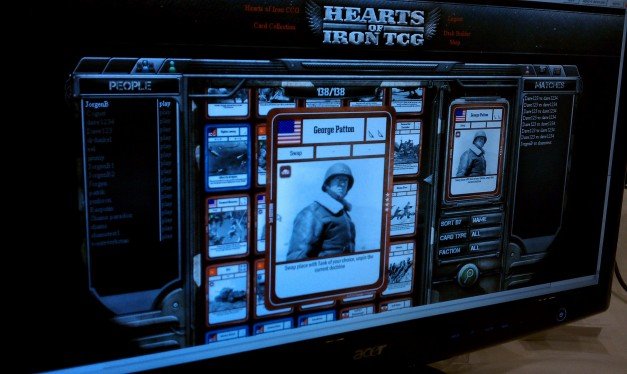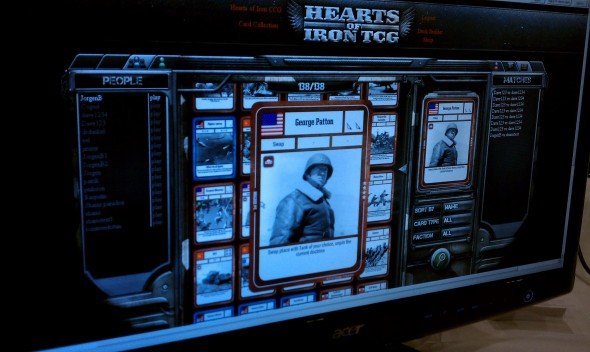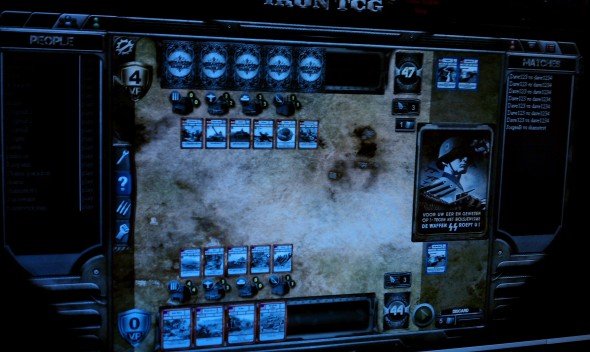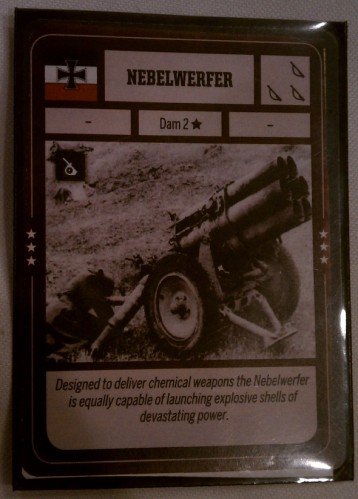WWII: the card game - a look at Hearts of Iron: TCG

It's Magic: The Gathering with tanks. I didn't play Hearts of Iron (map-based, grand strategy games aren't my forte) but I have played a heap of CCGs: Magic, Star Trek, Star Wars, Illuminati - I once impulse-bought the Warhammer 40k CCG with a friend to get us through a tedious, rainy camping trip.
Anyway, the Hearts of Iron card game isn't a physical card game. It's browser-based, free-to-play and linked up with Paradox's new home for its online games and content, Paradox Connect. You'll get a fair amount of stuff for free: new sign ups are rewarded with a starter deck from one of the three factions (Allied, Axis or the USSR), an avatar (with level-up system like Call of Duty), and a couple of boosters at the start, plus some premium cards depending on when you join. Booster packs can be purchased using Paradox Connect's currency, but they're also handed out for free - every player should receive a booster each week.

The other paid-for element is competitive matches. You'll be able to play casually with other players, but competitive matches (with boosters or individual cards as prizes) will cost a small amount of the Paradox Connect currency (hypothetically, Associate Producer Shams Jorjani tells me, one nickel) to initiate.
Magic: The Gathering is the base template for the card game's combat mechanics. Players play four types of factory cards from their hand (ammunition, weapons, tank and aircraft factories) that persist through the game (like mana in Magic) and use the factories in play to pay to roll out unit cards.

There'll be 120 cards in the basic set across the three factions: infantry, mortar teams, Sherman tanks and Panzers, aircraft like the P-47 Thunderbolt, and “doctrine” cards that determine what type of attack you can mount. Blitzkrieg is an example of a doctrine - it's powerful, but it requires a unit of each type (infantry, air, and armor) in hand to mount.
"We're not trying to replicate the extreme depth of HOI," Jorjani tells me. That's good - trying to shoehorn complex politics and armor battles into a relatively static medium like a card game would lead to a lot of super-specific rules. I'm relieved to see that the fundamental parts of unit cards - how much damage they do, and how much damage they can take - is dead-simple. Every unit can take a point of damage (which can be repaired by respending all or a portion of its casting cost). But if they take two units of damage, they're gone.
Jorjani also emphasized that Paradox won't be shy about tweaking the game as players discover new tactics and overpowered combinations. "Unlike Magic, we can balance cards," Jorjani said. Oh snap!
Keep up to date with the most important stories and the best deals, as picked by the PC Gamer team.
It's immediately reassuring that the game draws mostly on Hearts of Iron's brand - not it's somewhat-intimidating complexity - for content. I'll definitely play it; my main concern after my demo is the game's minimal presentation. Combat rounds didn't show any attack animations or window dressing to take advantage of the game's digital form, and I'd love to see an extra layer of visual elements to animate the raw process of putting cards on a digital table a little more.


Evan's a hardcore FPS enthusiast who joined PC Gamer in 2008. After an era spent publishing reviews, news, and cover features, he now oversees editorial operations for PC Gamer worldwide, including setting policy, training, and editing stories written by the wider team. His most-played FPSes are CS:GO, Team Fortress 2, Team Fortress Classic, Rainbow Six Siege, and Arma 2. His first multiplayer FPS was Quake 2, played on serial LAN in his uncle's basement, the ideal conditions for instilling a lifelong fondness for fragging. Evan also leads production of the PC Gaming Show, the annual E3 showcase event dedicated to PC gaming.

